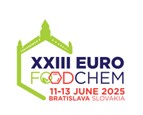Scientific journal
Journal of Food and Nutrition Research
Summary No. 2 / 2011
DROBNÁ, B. – FABIŠIKOVÁ, A. – ČONKA, K. – CHOVANCOVÁ, J. – DÖMÖTÖROVÁ, M. – WIMMEROVÁ, S. – ŠOVČÍKOVÁ, E. – KOČAN, A.
Differences between dioxin-like PCB, non-dioxin-like PCB, polychlorinated dibenzo-p-dioxin and dibenzofuran intake from human milk and infant milk formula by infants in the Michalovce district (SK)
Journal of Food and Nutrition Research, 50, 2011, No. 2, s. 106-117
Beáta Drobná, Department of Toxic Organic Pollutants, Slovak Medical University, Limbová 12, SK – 833 03 Bratislava, Slovakia. E-mail: beata.drobna@szu.sk
Summary: Polychlorinated biphenyl (PCB) and polychlorinated dibenzo-p-dioxin and dibenzofuran (PCDD/F) intake via nutrition (nursing, infant milk formula) by infants was evaluated. A cohort of mother-child pairs from an area contaminated with PCB by the Chemko chemical plant formerly producing PCB in eastern Slovakia was examined. Breast milk and blood serum were analysed for PCB and PCDD/F by high resolution gas chromatography/high resolution mass spectrometry (HRGC/HRMS). The median daily intake of total toxic equivalent (TEQ) of dioxin-like PCB (dl-PCB) and PCDD/F from breast milk for fully breast-fed children was 72.8 pg•kg-1 body weight per day, assuming 7.6 kg as average body weight of the child. However, daily total intake of TEQ of non-breastfed children during the first 10 month of life was only 0.21 pg•kg-1 body weight per day on average. Dl-PCB-TEQ contributed to the total TEQ in breast milk with a higher proportion (68%) than PCDD/F-TEQ (32%) because of a much higher contamination of breast milk with PCB in general. The median of the sum of non-dioxin-like PCB (ndl-PCB) daily intake assuming 7.6 kg body weight was evaluated as 2 342 ng•kg-1 body weight per day and ranged from 8 ng•kg-1 to 13 124 ng•kg-1 body weight per day.
Keywords: polychlorinated biphenyls; dioxins; breast milk; infant milk formula; daily intake
Download:
(pdf, 161.02 Kb, 5816x)










